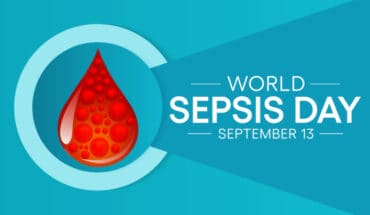In a world-first comprehensive study, the human immune system has been tracked from birth up until the age of 75 years. This has paved the way for future therapies to tune the immune systems of people at higher risk of certain diseases.
The research defined the composition of the human immune system throughout life by investigating over 50 populations of immune cells and establishing an immune cell cytometry atlas in people as they age. Cell populations from both the innate and adaptive immune systems were analysed, as both are crucial to help the body respond appropriately to infections.
Led by Sedi Jalali, a PhD candidate from Murdoch Children’s Research Institute, the researchers focused especially on younger age groups as very little was known about early-life immune development.
Perhaps unsurprisingly to parents and carers, the biggest changes to the immune system were seen after birth and particularly in school-aged children. These are periods when children are most exposed to new germs and get different vaccinations. Infant fevers, childcare and school colds are outcomes of our immune systems changing and responding to those novel exposures.
The research identified major changes to conventional and unconventional T cells, which develop in the body to specifically recognise molecules expressed by invading pathogens. There were also changes to B cells that produce antibodies to neutralise pathogens; and monocytes and natural killer cells, which are key players of the innate immune response and rapidly initiate the human immune response to various infectious diseases.
Associate Professor Daniel Pellicci, who leads the Murdoch Children’s Cellular Immunology group, said, “We knew shockingly little about how the immune system changes after birth and in early life, yet this is where we see the most changes and is when infants are most susceptible to a wide range of infections such as respiratory syncytial virus (RSV).
“By mapping the development of these immune populations as we age, with a focus on the critical early periods of infancy through to early adulthood, we now have a greater understanding of how ageing can influence our immune responses and how this can make us susceptible to different diseases over our lifespan. We hope this work becomes a valuable resource that others will build upon to identify immune changes caused by disease and find new treatments for human diseases.”
The article: “A high-dimensional cytometry atlas of peripheral blood over the human life span”
Researchers from the University of Melbourne, Melbourne Centre for Cardiovascular Genomics and Regenerative Medicine, Peter Doherty Institute for Infection and Immunity, Global Product Development Consulting for Infectious Diseases, The Fiona Elsey Cancer Research Institute, Federation University, The University of Sydney and Centenary Institute and The Royal Children’s Hospital also contributed to the research.
Funding:
The research was funded by the National Health and Medical Research Council* (grants 1145373, 1140126 and 1122890) and a Heart Foundation Vanguard Grant (102236).
*This story does not reflect the views of the NHMRC
- New lipid-based pathway discovered as key to memory formation - 25th June 2025
- Crucial link could explain how Alzheimer’s takes hold - 25th June 2025
- Understanding Your Mind Can Improve Daily Life - 25th June 2025







